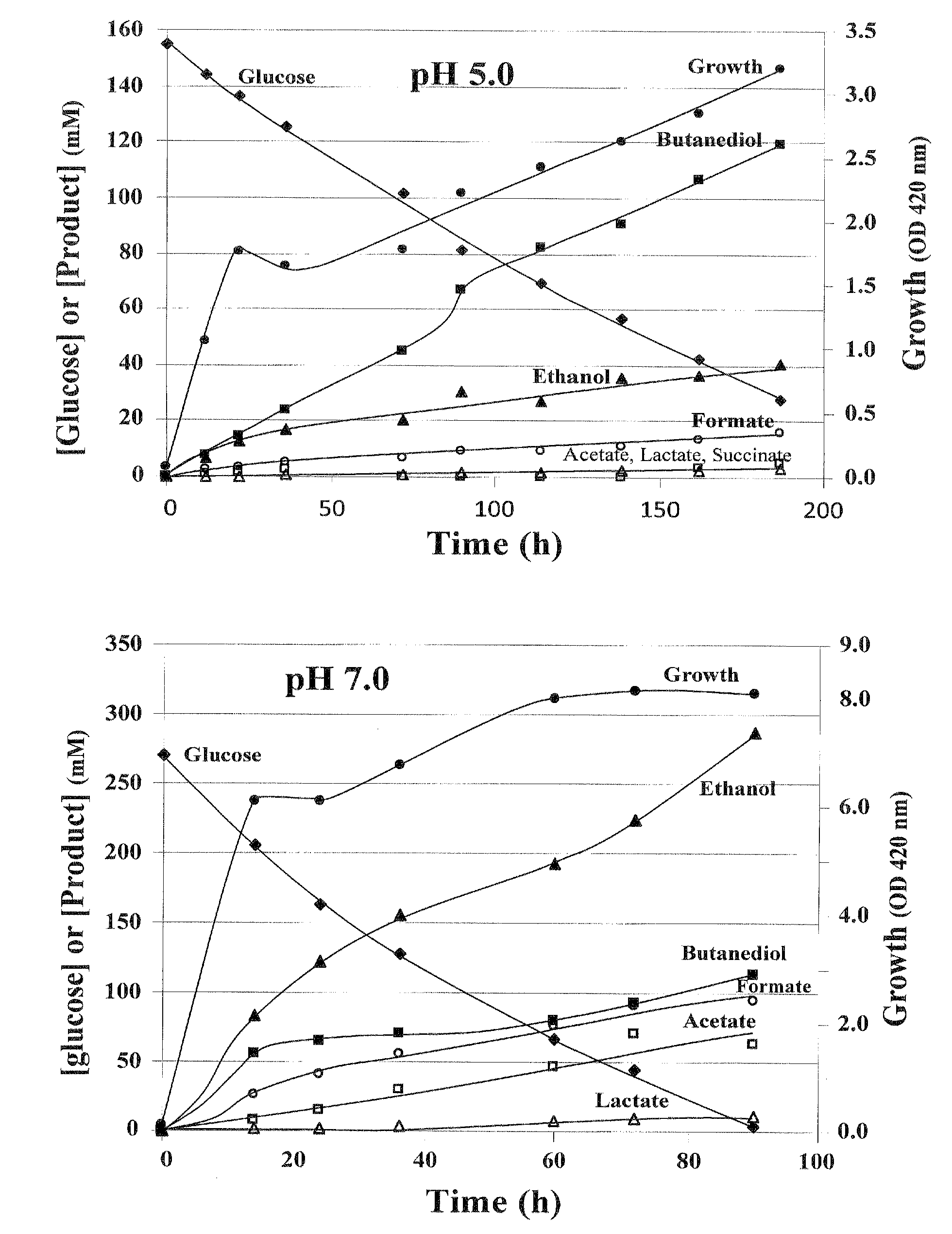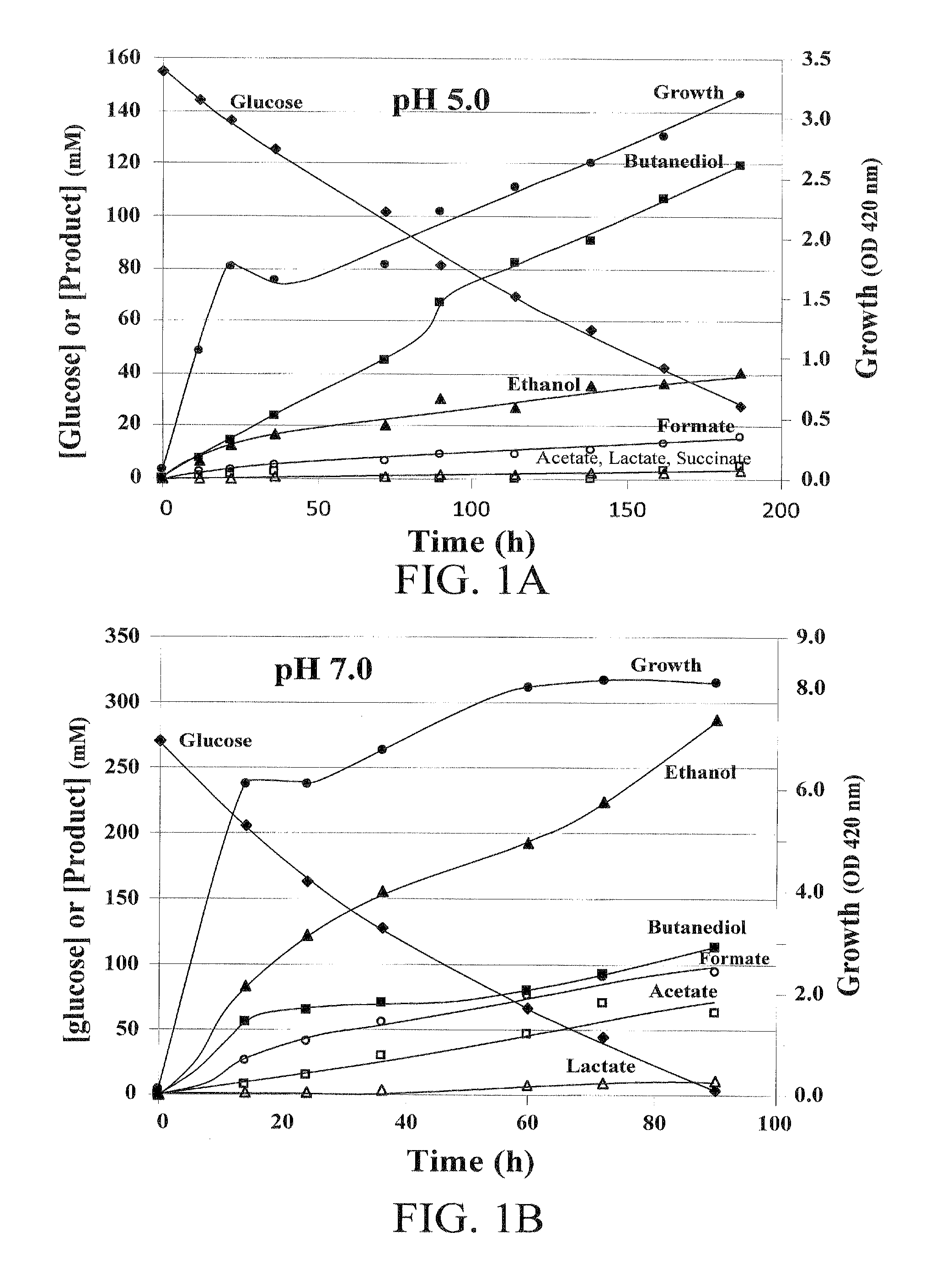Engineering of thermotolerant bacillus coagulans for production of d(-)-lactic acid
a technology which is applied in the field of thermotolerant bacilli and lactic acid engineering for the production of d (-)lactic acid, can solve the problems of inability of lactic acid bacteria used in the industry to efficiently ferment pentoses to lactic acid, and the product is a mixture of the two isomers
- Summary
- Abstract
- Description
- Claims
- Application Information
AI Technical Summary
Problems solved by technology
Method used
Image
Examples
example 1
Construction of a D(−)-lactic acid producing thermotolerant Bacillus coagulans
[0090]Materials and Methods
[0091]Bacterial Strains and Plasmids
[0092]B. coagulans wild type strain P4-102B was described previously (27). Escherichia coli strain Top10 (Invitrogen) and Bacillus subtilis strain HB1000 (11) were used as hosts during construction of various plasmids used in this study. Plasmid pGK12 carries chloramphenicol and erythromycin resistance genes and replicates in several Gram-positive bacteria and E. coli (17, 21). Although this plasmid has a broad host-range, its replication is naturally restricted to temperatures B. coagulans that can grow at 50-55° C. Plasmid pGK12 and its derivatives were maintained in B. subtilis strain HB 1000 at 37° C. When transformed into B. coagulans, the transformants were selected and maintained at 37° C. B. coagulans mutant strains and plasmids used in the construction of mutants are listed in Table 1.
[0093]Medium and Growth Condition
[0094]L-broth (LB...
PUM
| Property | Measurement | Unit |
|---|---|---|
| Temperature | aaaaa | aaaaa |
| Temperature | aaaaa | aaaaa |
| Temperature | aaaaa | aaaaa |
Abstract
Description
Claims
Application Information
 Login to View More
Login to View More - R&D
- Intellectual Property
- Life Sciences
- Materials
- Tech Scout
- Unparalleled Data Quality
- Higher Quality Content
- 60% Fewer Hallucinations
Browse by: Latest US Patents, China's latest patents, Technical Efficacy Thesaurus, Application Domain, Technology Topic, Popular Technical Reports.
© 2025 PatSnap. All rights reserved.Legal|Privacy policy|Modern Slavery Act Transparency Statement|Sitemap|About US| Contact US: help@patsnap.com



